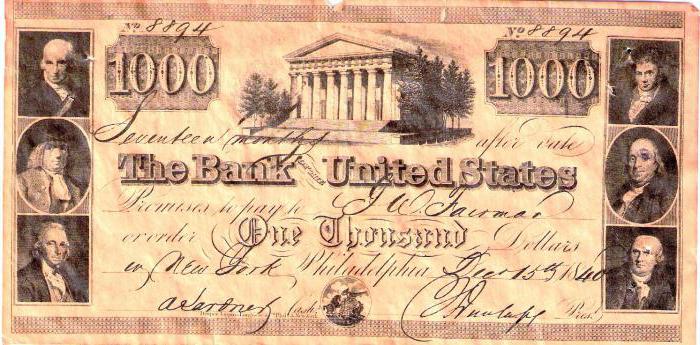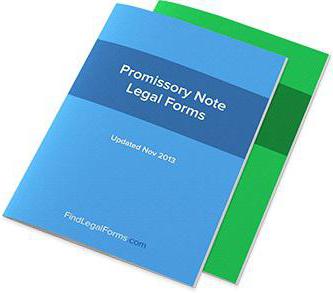The conduct of any financial and economic activity involves the use of securities, which are necessary in order to assure someone else's property or monetary law. One of the types of such documents is a bill, used by mankind since ancient times. Despite such a long history, it is still successfully used to determine the economic relations between its owner and the business entity that issued this security.
In this article we will try to understand what a bill is, what it can be and why it is needed at all. But first, let's look at his story.
The emergence of a bill
A simple historical example will help you understand what a bill is and where it came from. And the story begins in ancient Greece. The rampant crime on trade roads made the ancient merchants think about maintaining the integrity of their money. The first exchange of financial documents looked something like this: the merchant received from one seller of goods a receipt addressed to another seller that the merchant could borrow money from him, and the latter would later be able to get his money from the one who issued the document, naturally, presenting it.
Similar operations with bills were used by medieval traders, and in 1569 in Bologna (Italy) even the first bill charter was issued, which enshrined the basic rules for using bills. Further, the history of this document goes to medieval Germany, where, by the way, he got his real name - wechsel, which is translated from German as "exchange".
In 1848, the Prussian General Law was adopted in Prussia, which France, Italy, Russia, Belgium, Norway and other European states adhered to. And in 1930, a convention was adopted in Geneva, which unified the norms of international law relating to operations with these securities. By the way, it is valid now.
What is a bill
What is this security today? Today a bill is a document defining monetary debt obligation and drawn up in accordance with the form prescribed by law. It is issued by a person called a drawer, or issuer, to another party called a drawer, or remitter.  In fact, the document indicates the financial debt of one person to another. The subject of obligations for such securities may be exclusively cash, which determines the value of the bill.
In fact, the document indicates the financial debt of one person to another. The subject of obligations for such securities may be exclusively cash, which determines the value of the bill.
This type of securities gives the indisputable right to claim the return of the borrowed debt after the expiration of the period provided for by it.
What is the difference between a bill of exchange from other financial documents
Almost all types of securities involve securing a transaction. The bill transaction does not require this. In other words, a bill of exchange is an absolutely abstract document. Other differences include:
- the possibility of transfer from hand to hand to third parties without documenting such an operation;
- liability for a bill transaction for persons taking part in its circulation is joint and several (the exception is persons who make non-negotiable inscription);
- blanks of bills are mandatory established by state law;
- in case of non-payment of the debt within the prescribed period, no legal proceedings are required, a notarial protest is enough.
What is a bill of exchange as a document
In accordance with the "Regulation on a simple and bill of exchange" the document must contain:
- an appropriate label indicating that it is a bill of exchange, and not some other security; a bill label is usually used twice: at the top of the document and in its text, and blanks of bills without a label are considered invalid;
- a text containing the usual offer to pay a certain amount only because the document was issued;
- clearly defined amount of money;
- payer data (for bill of exchange);
- payment term (upon presentation, at such and such a time from preparation, at such and such a time from presentation, at a clearly indicated date and time);
- the place where the payment should be made;
- details of who should be paid;
- date and place of drawing up the bill;
- handwritten signature of the person who issued the bill.
Benefits of Bills
As already mentioned, bill transactions are the issuance (receipt) of cash loans. Enterprises and organizations can carry out similar operations, bypassing the banking system with its conditions and mandatory commissions. In addition, the bill is mobile financially. Being a security, it can always be sold in the stock market or pledged to a bank.
The main types of bills
Promissory notes are divided into promissory notes and transferable. The first type provides for the issuance of a loan and the signature of the debtor that he undertakes to return it to the creditor at a clearly defined time in a specified place. Only two persons participate in such a transaction: the drawer and the drawer.
A bill of exchange (draft) is issued and signed exclusively by the creditor. The text of such a document contains an order to the debtor to pay the debt within the indicated period, but not to him, but to a third party (remitter).
Varieties
In addition to the classification of bills by type, in addition they can be divided into forms:
- Commercial (commodity) - documents designed to ensure transactions of sellers and buyers.
- Financial - allow enterprises to receive loans and credits from other enterprises.
- Blank - documents for trade transactions when the price of a product or service has not yet been established or may change. In this case, the buyer, fully trusting the seller, confirms with his signature the blank form, which will be filled later by the last.
- Friendly bills are issued only to those who deserve unconditional trust.
- Bronze - documents without real security issued to fictitious persons or enterprises. Such bills are often used simply for bank accounting or artificially increasing bankrupt debts.
- Security - promissory notes issued to secure a loan or credit from a knowingly unreliable borrower. Such a document is usually stored on a deposit account with the debtor, and is not intended for circulation. Upon settlement of the loan, the bill is repaid;
- Rekt-bill (registered) - a security from which the drawer took away its main property - transfer to another person.

Acceptance and Endorsement
The process of making a future payer financial obligations to pay a bill of exchange is called acceptance. In fact, this is his consent, confirmed by the corresponding signature of the acceptor.
An endorsement of a bill is its reassignment to a third party. It can only be applied to promissory notes. An endorsement provides for the endorsement on the document itself, according to which all rights to it pass to another person. Typically, such an inscription is made on the back of the bill or on a special additional sheet called allonge.
A person who has left his signature under an endorsement and has accepted the rights to a financial document is called an endorser.
Aval bills
Aval is a kind of guarantee on a bill.It can be carried out by any person, with the exception of the drawer and drawer. The person who put the aval on the document is called an avalist.

In other words, the avalist, having vouched for the payer, assumes the obligation of the bill, and having paid on it, he acquires the legal right to claim the debt.
Avalancing of a bill is carried out by inscribing on it the inscription: "Count as an aval" or similar, and signing it. The inscription can be made on the front side of the document, reverse or on the allonge.
The guarantee is valid even if the obligation itself on the bill of exchange is declared null and void. The only condition for the cancellation of the aval is the recognition of the bill invalid due to its incorrect compilation.
Leasing in most cases is carried out by commercial banks. As a result of this, the document receives bank guarantee.
Bill accounting
Accounting for bills is a process of lending to legal entities by banks by selling them before the maturity date of the debt. In fact, this is an urgent loan, only with the provision to the lender of certain discounts (discounts). It is carried out by transferring the required amount to the bearer's account.
Accounting bills can have three varieties:
- usual;
- with reverse;
- non-negotiable.
The bank's bill of the first type of accounting provides for lending, according to which the bearer is obligated to pay the full bill amount, including the face value (body) and agreed interest, within the prescribed period. Reverse accounting obliges the borrower to redeem the recorded bills before the due date for payment. In non-negotiable accounting, the bearer is not responsible for the full payment of the bill, and sells it to the bank at a bargain price.
Common Bills Myths
Myth 1: bill transactions are the destiny of unstable enterprises. Reliable companies specialize in issuing bonds.
In fact: most of the enterprises issuing bonds started precisely with bill loans. This stage of preparation provides a positive experience for future interaction with creditors, and also expands their circle.
Myth 2: it is easier for a company in need of a loan to get a loan from a bank, especially if the required amount is less than the minimum bond loan.
In fact: all banks are limited in lending to enterprises by the rules and regulations of the Central Bank, their own limits and various kinds of deductions. In addition, the bank will necessarily require the borrower to provide some collateral for insurance operations. Independent companies can make their own lending decisions without depending on anyone.
Myth 3: operations with bills of exchange do not have a good reputation, as they are often used to implement gray schemes.
In fact: indeed, in the nineties in Russia various bill frauds were widely used, which, in fact, gave rise to this myth. And even today there are schemes that do not quite meet the legislation, but they, as a rule, do not apply to publicly issued bills. But after all, other securities can be used in the same way for various kinds of illegal operations.



